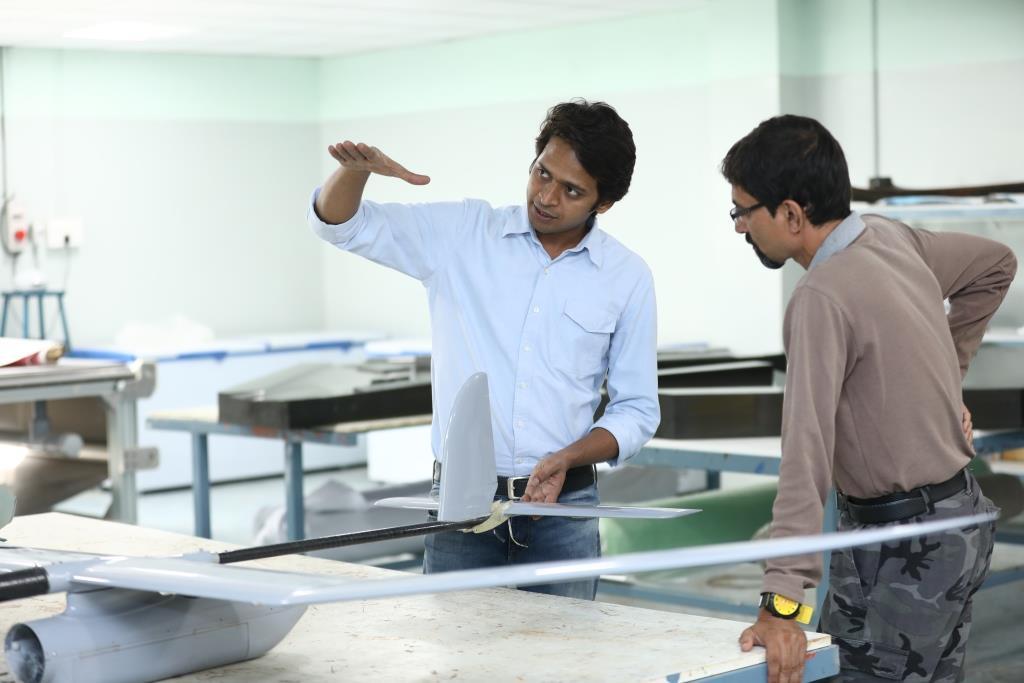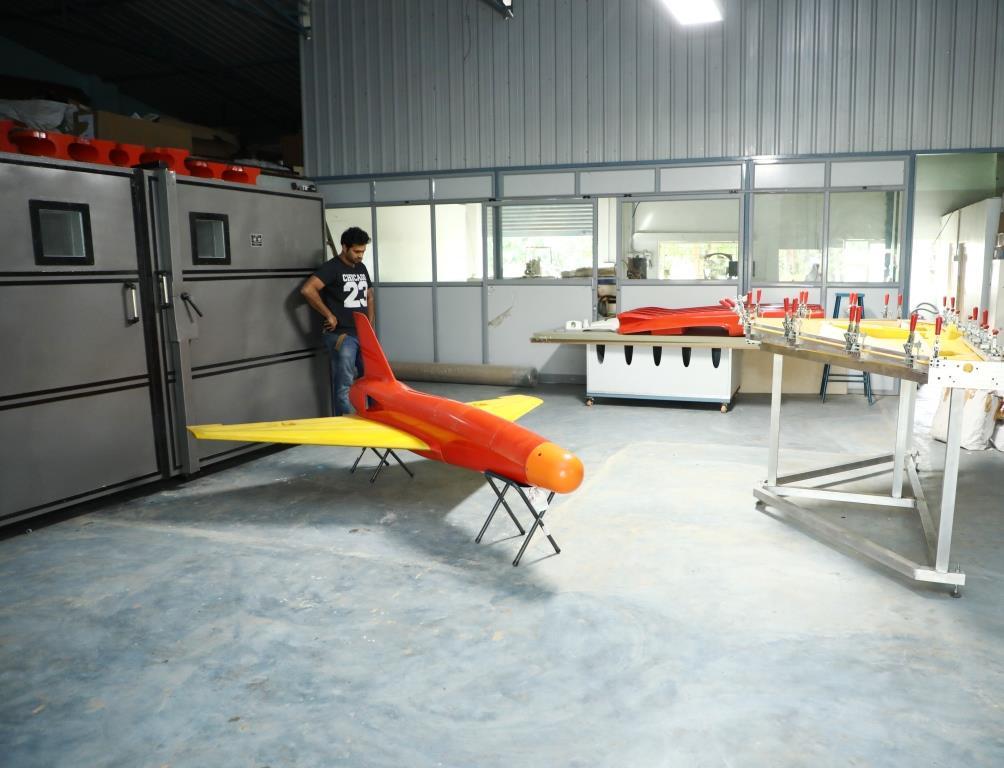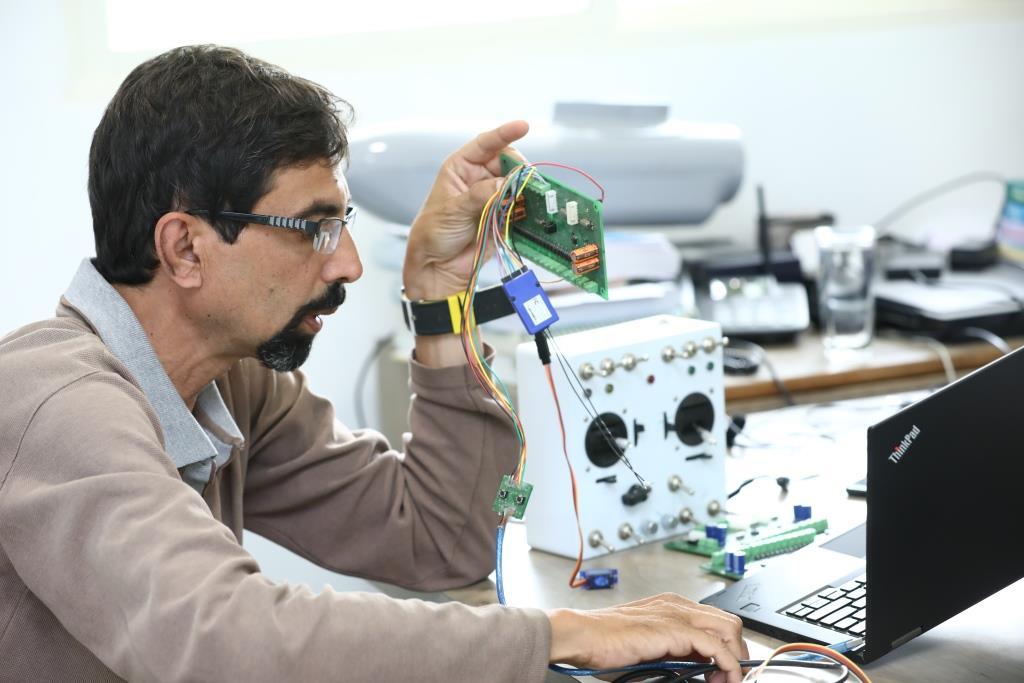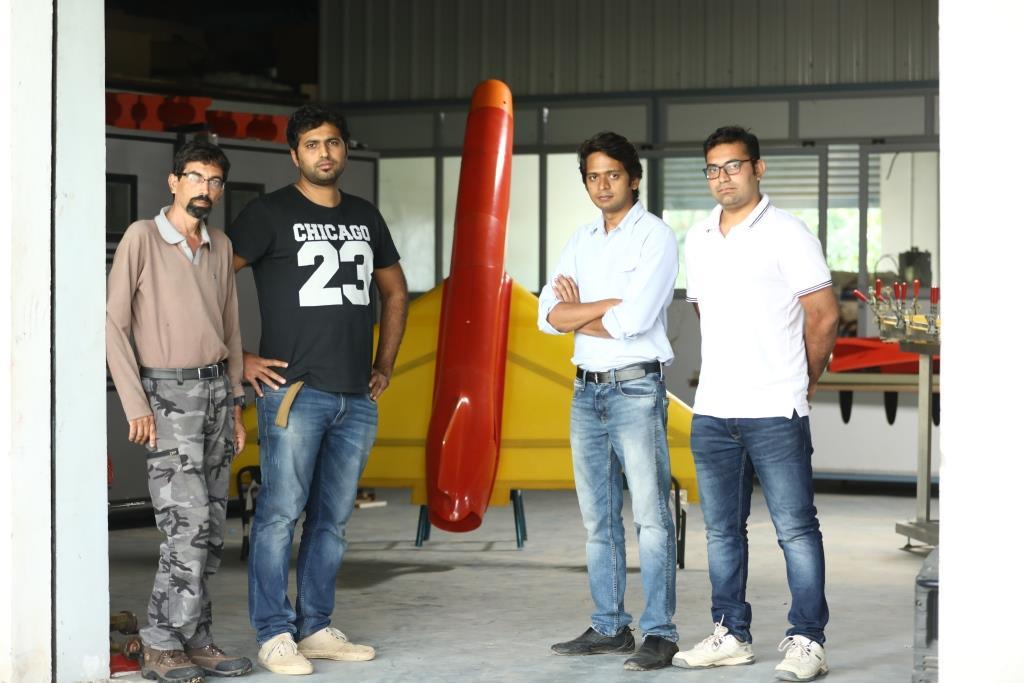How only one company is able to expand the boundaries of the possible in the field of unmanned aerial vehicles
An airplane without a pilot first flew into the sky more than a hundred years ago. And the fact that, at first glance, it may seem something incredible is simply the achievements of technologies that are gradually changing our understanding of various areas, from healthcare to retail.

An airplane without a pilot first flew into the sky more than a hundred years ago. And the fact that, at first glance, it may seem something incredible is simply the achievements of technologies that are gradually changing our understanding of various areas, from healthcare to retail.
Unmanned aerial vehicles (UAVs) or simply “drones” have long been used by armed forces around the world to perform tasks that are considered too “boring, dirty, or dangerous” for human pilots.
But far from the tense situation of command posts, drones are gradually turning into a very valuable tool. According to one consulting firm specializing in aviation, only in 2016 about two million household drones were sold. Private companies use them to deliver goods purchased online, provide remote regions with Internet and simply to create stunningly beautiful landscape photos from the air.
Quoting one of the pioneers of modern UAVs: “Humanity is entering the era of drones!”
The fast-growing industry of creating drone relies on several other areas, including the construction of the aircraft themselves, the production of equipment for them and the development of software. Together, these components give the UAV the ability to perform virtually any mission assigned to them. Most modern development companies specialize in only one or two of these areas. Therefore, when the product moves to the next executor in the production chain, errors and delays may occur, and the final cost of the drones increases.

But in the crowded metropolis of Bangalore in India, there is a company with a staff of just 22 employees who wants to change this situation.
Absolute Composites, a company founded by engineer Raghav Reddy, uses composite materials such as carbon fiber, honeycomb sandwich panels, and the most advanced manufacturing processes to create UAVs of various sizes with minimal fuel consumption. At the same time, Absolute Composites devices can fly further and carry heavier loads than drones created using any other technology that existed before.
Among the company's customers there are several large Indian organizations involved in the study of drones, which are developing technologies for the defense industry of India, scientific research and modern aerospace solutions.
Ruddy is confident that Absolute Composites drones will completely change the approach to the transportation of goods, which will help both in the delivery of humanitarian aid and in defense, because any necessary goods and materials will be delivered to the right place without endangering the life of a human pilot.

For example, in his opinion, drones can be used to deliver medicines to remote or hard-to-reach regions of the world and help victims of various disasters. Drones can fight fires, deliver supplies to residents during a flood, monitor the growth and condition of crops, and perform many other useful functions.
Absolute Composites independently develops the design of its UAVs, builds them using ultra-light and inexpensive composite materials and tests the devices to check whether they are ready to work in the field. Reddy and his team are involved in every stage of the creation of drones, which for a developing market for developing UAVs is simply a unique phenomenon.

For Absolute Composites, ThinkPad laptops have become the ideal tool that is used at every stage of product development. Ruddy says that his employees spend almost all the time on the move, so their laptops must be ready for any tests that may occur on the road and for any working conditions. Both at home and in the laboratory, the Absolute Composites team constantly uses the ThinkPad for mathematical modeling and calculations.
In addition, ThinkPad laptops are used as a control panel for all the company's drones. During the test, employees download specially designed software that turns the ThinkPad into a UAV ground control station.
The company is engaged in the creation of drones that can fly in the Earth’s stratosphere. Therefore, it is not surprising that devices often fly far beyond the field of view of their creators. In such cases, the team calculates the GPS coordinates and enters them and the corresponding instructions in the ThinkPad, which is used as a ground control station, to get the drone to the desired point, regardless of whether the testers can see it now.

For Reddy, “reaching for the skies” was an old dream, and in order to achieve this dream, he had to go through many difficulties, including technical and financial ones.
“I settled on composite materials because they are great for building aircraft and are quite inexpensive, that is, you could start working with them with only a modest start-up capital,” Reddy comments. “To be honest, my start-up capital was ... $ 40.” In 2005, an engineer purchased tools, carbon fiber and tar with this money and set up a workshop right in his kitchen. It is from this project that the history of the company began, which eventually turned into Absolute Composites.
“Friends decided to join me, and in general, support was provided by an amazing number of people,” Reddy notes. At that time in India it was difficult to get even the simplest materials and devices, like a radio controller or a propeller. - It was almost impossible to import something from complex equipment. We hoped for relatives who traveled to the United States — sent them information about the necessary parts and devices and waited six months or a year to get at least some equipment. ”

Now the situation for Absolute Composites has changed quite a lot for the better, but this does not mean that Reddy and his team will stop expanding the boundaries of what is possible and open new horizons.
To date, their UAVs can spend seven times more time in the air and carry twenty times more than any commercial drones available commercially. The company hopes to further develop its products and create more and more innovative devices to help solve problems in their home country and in the world. In the end, there is no limit to perfection.
Rachel Arora manages the Lenovo program, which tells you about the success stories of the company's customers .

An airplane without a pilot first flew into the sky more than a hundred years ago. And the fact that, at first glance, it may seem something incredible is simply the achievements of technologies that are gradually changing our understanding of various areas, from healthcare to retail.
Unmanned aerial vehicles (UAVs) or simply “drones” have long been used by armed forces around the world to perform tasks that are considered too “boring, dirty, or dangerous” for human pilots.
But far from the tense situation of command posts, drones are gradually turning into a very valuable tool. According to one consulting firm specializing in aviation, only in 2016 about two million household drones were sold. Private companies use them to deliver goods purchased online, provide remote regions with Internet and simply to create stunningly beautiful landscape photos from the air.
Quoting one of the pioneers of modern UAVs: “Humanity is entering the era of drones!”
The fast-growing industry of creating drone relies on several other areas, including the construction of the aircraft themselves, the production of equipment for them and the development of software. Together, these components give the UAV the ability to perform virtually any mission assigned to them. Most modern development companies specialize in only one or two of these areas. Therefore, when the product moves to the next executor in the production chain, errors and delays may occur, and the final cost of the drones increases.

But in the crowded metropolis of Bangalore in India, there is a company with a staff of just 22 employees who wants to change this situation.
Absolute Composites, a company founded by engineer Raghav Reddy, uses composite materials such as carbon fiber, honeycomb sandwich panels, and the most advanced manufacturing processes to create UAVs of various sizes with minimal fuel consumption. At the same time, Absolute Composites devices can fly further and carry heavier loads than drones created using any other technology that existed before.
Among the company's customers there are several large Indian organizations involved in the study of drones, which are developing technologies for the defense industry of India, scientific research and modern aerospace solutions.
Ruddy is confident that Absolute Composites drones will completely change the approach to the transportation of goods, which will help both in the delivery of humanitarian aid and in defense, because any necessary goods and materials will be delivered to the right place without endangering the life of a human pilot.

For example, in his opinion, drones can be used to deliver medicines to remote or hard-to-reach regions of the world and help victims of various disasters. Drones can fight fires, deliver supplies to residents during a flood, monitor the growth and condition of crops, and perform many other useful functions.
Absolute Composites independently develops the design of its UAVs, builds them using ultra-light and inexpensive composite materials and tests the devices to check whether they are ready to work in the field. Reddy and his team are involved in every stage of the creation of drones, which for a developing market for developing UAVs is simply a unique phenomenon.

For Absolute Composites, ThinkPad laptops have become the ideal tool that is used at every stage of product development. Ruddy says that his employees spend almost all the time on the move, so their laptops must be ready for any tests that may occur on the road and for any working conditions. Both at home and in the laboratory, the Absolute Composites team constantly uses the ThinkPad for mathematical modeling and calculations.
In addition, ThinkPad laptops are used as a control panel for all the company's drones. During the test, employees download specially designed software that turns the ThinkPad into a UAV ground control station.
The company is engaged in the creation of drones that can fly in the Earth’s stratosphere. Therefore, it is not surprising that devices often fly far beyond the field of view of their creators. In such cases, the team calculates the GPS coordinates and enters them and the corresponding instructions in the ThinkPad, which is used as a ground control station, to get the drone to the desired point, regardless of whether the testers can see it now.

For Reddy, “reaching for the skies” was an old dream, and in order to achieve this dream, he had to go through many difficulties, including technical and financial ones.
“I settled on composite materials because they are great for building aircraft and are quite inexpensive, that is, you could start working with them with only a modest start-up capital,” Reddy comments. “To be honest, my start-up capital was ... $ 40.” In 2005, an engineer purchased tools, carbon fiber and tar with this money and set up a workshop right in his kitchen. It is from this project that the history of the company began, which eventually turned into Absolute Composites.
“Friends decided to join me, and in general, support was provided by an amazing number of people,” Reddy notes. At that time in India it was difficult to get even the simplest materials and devices, like a radio controller or a propeller. - It was almost impossible to import something from complex equipment. We hoped for relatives who traveled to the United States — sent them information about the necessary parts and devices and waited six months or a year to get at least some equipment. ”

Now the situation for Absolute Composites has changed quite a lot for the better, but this does not mean that Reddy and his team will stop expanding the boundaries of what is possible and open new horizons.
To date, their UAVs can spend seven times more time in the air and carry twenty times more than any commercial drones available commercially. The company hopes to further develop its products and create more and more innovative devices to help solve problems in their home country and in the world. In the end, there is no limit to perfection.
Rachel Arora manages the Lenovo program, which tells you about the success stories of the company's customers .
All Articles